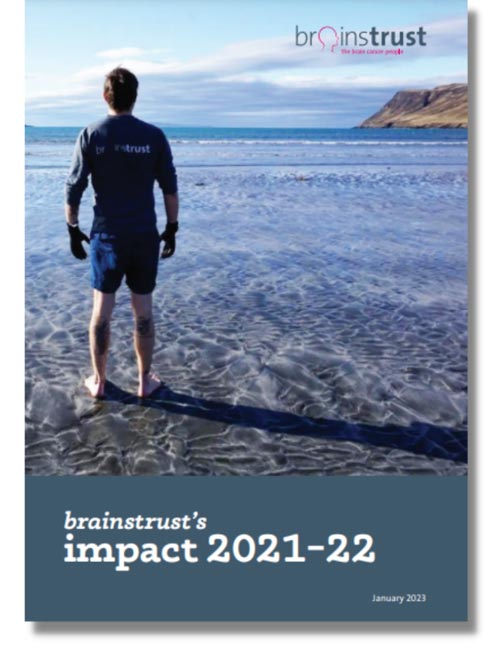How we raise the money needed to support people with a brain tumour
“Our supporters continue to inspire us with their ideas for fundraising activities, and it’s rewarding to be able to take a tailored and individualised approach to the way we help to realise their ambitions and passions.” – Julia Smith, fundraising manager at brainstrust
In 2021 our supporters raised £952,203 to fund brainstrust’s mission. This income remains from a diversified mix of traditional charity fundraising activity. Our funding comes from:
- Direct and regular giving from supporters

- Fundraising at home and in the community
- Sponsored events and challenges taken on by our incredible community
- Companies who support our work
- Other charities in the form of grants from trusts and foundations
- Gift Aid recovery
- In memory giving
- Trading
We have very limited income from special purpose fundraising, legacy fundraising and high-net-worth individuals and no investment income.
Fundraising headlines and highlights in recent times include:
 Jack Jarvis rows the Atlantic, sets a new world record and raises funds and awareness of brainstrust. Jack set off from the Portuguese on 3 December 2021 with the aim of becoming the first person to row this treacherous route across the Atlantic. Successful completion of the challenge saw Jack awarded with a Guinness World Record and raised £70,000 for brainstrust.
Jack Jarvis rows the Atlantic, sets a new world record and raises funds and awareness of brainstrust. Jack set off from the Portuguese on 3 December 2021 with the aim of becoming the first person to row this treacherous route across the Atlantic. Successful completion of the challenge saw Jack awarded with a Guinness World Record and raised £70,000 for brainstrust.
Follow the Seagulls returned after Covid restrictions eased. Walkers gathered in Whitby, on the Isle of Wight, in Fife and in Dartmouth to walk 50 miles in 2 days to support the brain tumour community. £49,000 was raised at Follow the Seagulls 2021, bringing the total raised by Follow the Seagulls since it’s inaugural walk in 2013 to £208,000!
Eight runners joined team brainstrust to take on the London Marathon. The team of eight hardy runners raised an amazing £14,000 for their triumphant efforts taking on this iconic race.
Support from trusts and foundations
Thank you to our trust and foundation partners for caring about people who are living with a brain tumour diagnosis. Your support has played a meaningful role in helping brainstrust to survive and thrive. Your compassion has helped us to make a difference.
We are grateful to The Rank Foundation for its continued support. We value our membership of RankNet and the opportunities it brings for learning and sharing. Thank you to The National Lottery Community Fund and players of The National Lottery. The second year of our Reaching Communities grant has helped us to support more people in the Midlands and southern England with our high-impact coaching.
Thank you to new funding partner the Moondance Foundation for helping us to grow our service in Wales.
We are grateful to The Wyseliot Rose Charitable Trust for its dedication and kindness over many years.











